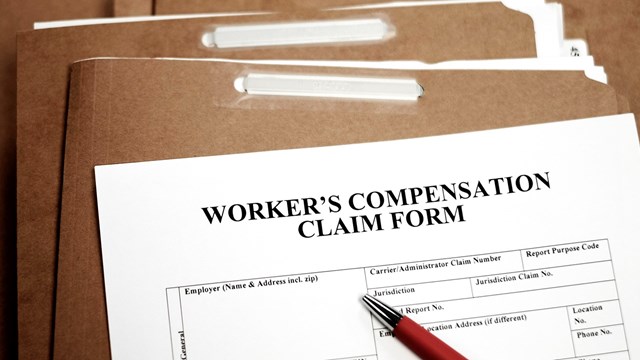
It’s no secret that insurance is a necessity for any building or association. Nevertheless, the expense of coverage means that issues of liability and risk are all too often examined only after problems have occurred. Usually, insurance holders address matters “because something bad has happened,” says Robert M. Prince, a partner at the law firm of Cervantes Chatt & Prince P.C., which has offices in Chicago and Burr Ridge, Illinois. “Someone has been hurt or a lawsuit filed…it’s more reactive in nature. Other times, a new case or law comes out and that prompts boards and managers to look at how they’re doing things.”
Though, these days, “Associations are doing more with less money,” says Prince. “They want to pay less to insurers or attorneys, and they’re being more proactive about costs.” And that’s good news - there’s plenty that co-ops, condos and HOAs can do to decrease costs and keep them low by reducing their exposure to liability.
Matt Mercier, director of community insurance and risk management for CBIZ, a business services and coverage provider headquartered in Cleveland, says there are all types of potential liability that could cause severe financial consequences to an association and its membership. Boards of directors – usually with the help of their management team – oversee managing those risks along with the day-to-day operations of their community. By taking the right steps, coverage costs can be kept in check.
“For the association to reduce its liability exposure to legal and insurance costs, the board should seek assistance from its trusted advisors,” Mercier says, “including community association managers, attorneys, risk managers, and accounting firms. These trusted advisors must be community association specialists.”
Steps for Sound Risk Management
It’s important that every association develops a risk management program, a process established by the community association to reduce (or eliminate) the adverse financial effects from liability losses or accidents. Mercier outlines the steps in the process as follows:
1. Identify (and analyze) the exposure to loss.
2. Determine alternatives to handle the risk.
3. Select the best alternative.
4. Implement the alternative to manage the risk.
5. Monitor and adjust (when needed) the risk management program.
“Risk financing is a topic not well understood by most board of directors,” he says. “Risk financing includes risk transfer and risk retention. It simply means the board and the owners will know where the funds are or will come from in the event of a loss.”
Case Study 1 – Slip-and-Falls
In 2015, Mercier had a client for whom the rising cost of liability insurance was threatening to become a major budgetary item. Thanks to trip/slip-and-fall claims on the property, the association’s general liability premium increased from $9,300 to $95,000 over a two-year period. Mercier’s firm was brought in to help mitigate and prevent further losses from occurring on the property.
“During this two-year period, the association suffered over $600,000 of liability losses, with most of the claims occurring by slips, trips and falls on association common elements,” Mercier says. “We conducted a comprehensive risk analysis to determine the strengths and weaknesses in the association’s current risk management program.”
In addition to the risk analysis, the firm reviewed in detail the last five years of liability losses that had occurred on the association’s property. In doing so, it identified areas of the common element property where the majority of the claims were occurring.“A loss control survey was performed to determine any potential claims hazards on property and to investigate the areas of claims activity,” Mercier says.
In addition to the in-house loss control specialist, the association also worked with a licensed claims adjuster/advocate and checked in with the local Community Associations Institute (CAI) chapter for advice.
Among the changes the community made were developing and distributing a safety manual, upgrading its accident report process, and implementing a maintenance log. All of these things helped to reduce their exposure and liability going forward.
Non-board residents took part in an insurance committee and a safety committee, and Mercier notes they played a huge role in implementing and maintaining a risk management and safety program. “By thinking, ‘safety first,’ it ultimately led to the reduction of claims and lowering of the association’s liability premium,” he says. In its first two years after implementing the risk management program, the association has reported no new claims and its premium was reduced from $95,000 to $22,000.
Other firms take similar steps. To better educate his clients, Stuart Cohen, founder of the Somers, New York-based City Building Owners Insurance Program, offers a “commercial planner guide,” which allows boards and managing agents to understand industry terms and jargon. For instance, it explains the difference between ‘water backup’ versus a flood, as well as terms like ‘risk transfer of workmanship’ so that when contractors are hired, any damage attributable to their personnel or work would be paid their insurance, not the building’s. “They also have to request the proper insurance from the unit owners,” says Cohen. “Individual owners have to have their own insurance because the master policy of the building does not cover the improvements or contents of the units. Some unit owners may not understand that their units are not part of the building policy.”
Case Study 2 – Points of Exposure
“There are many coverages available for various amenities,” says Richard J. Lippin, senior vice president for the Woodbury, New York-based insurance firm
SterlingRisk. “Some may be endorsed onto a current policy, such as an additional Covered Property endorsement to accommodate paved surfaces and pools. There are also extensions of coverage available on third-party liability policies, such as herbicide and pesticide applicators liability.
“Depending on the amenity or operation, a separate policy may be necessary,” he continues. “An association should maintain a list of their amenities and operations and update it regularly, so that it can be provided to their broker on an annual basis to ensure that all coverage options are being appropriately considered.”
“When we talk with any board, we manage what their exposures are,” says John Lee,vice president of FirstService Financial, an insurance brokerage with offices across the country. “A lot of success that we have seen has come from educating board members on what their true exposures are, because frequently insurance agents focus specifically on the cost of insurance, but not necessarily their total exposure, and what the community would be paying in the event of a hurricane.”
Pam Malfavon is product manager for FirstService Financial, and notes that the company recently worked with Hampton Beach Club in Pompano Beach, Florida, which had a liability policy with limits of $1 million per occurrence, with $2 million aggregate for the deductible. The community also had an umbrella policy for $50 million to increase the underlying limit.
“For this association, they had an exposure that was not really identified by their previous agent,” Malfavon says. “They had direct access from eight units to the pool – and no fence. For the insurance company, that’s a huge exposure. There can be kids running around the pool and they could very easily fall in – or someone could be drinking. There’s just significant exposure.”
The umbrella policy excluded the pool because of the lack of fencing and a gate – but the community wasn’t aware of that. Malfavon alerted the board of this alarming gap in their coverage and helped them to rectify the situation. The community could have opted to fence and gate the pool area, but they ultimately decided that they didn’t want to have an assessment and opted instead to have Malfavon’s firm find them the coverage they needed.
“We contacted the carrier directly to ensure there wasn’t a waiver, but what happened was they filled out the policy incorrectly, and there was never an inspection done, so if there was a claim, they would have denied it,” Malfavon says. “We found the association a carrier that covered this exposure, and now they are fully covered.”
Another association that FirstService worked with had a marble deck surrounding their pool – and thanks to the extremely slippery surface, had approximately 70 slip-and-falls over the course of a year. To help them reduce liability, the company made it clear that the association needed to do something about the hazardous marble deck – so the HOA temporarily closed the pool until it could be replaced with a safer, non-slip surface.
Case Study 3 – Staying on Top of Risk
Community association attorney David Ramsey of Becker & Poliakoff, which has offices in Florida, New Jersey, New York, and Washington, D.C., recently helped Rossmoor Community Association, a 2,300-unit association with 14 condos and four co-ops in Monroe Township, New Jersey, lower its liability.
“They have a master policy that covers all the associations, and they are an age-restrictive community,” Ramsey says. “Over the years, they’ve had a lot of slip-and-fall accidents, and during the winter season saw more problems because of the weather.”
Whenever there was a claim, the insurance agent was at the property immediately, helping and looking for what could be a risk for further claims down the line. He and the general manager would make sure that the board knew about any potential liability problems. “For a long while, they had a risk assessment committee that would report back on any risky situations,” he continues. “They were also very quick with reporting about any potholes, and any practical things that could be done, were done. “Those actions have combined to reduce the number of claims.”
Today, says Ramsey, unit owners having work done on their unit must sign a declaration of maintenance operation to take liability away from the association. For projects already completed, the association asked unit owners for indemnity agreements that kept it from any liability. “Those actions have combined to reduce the number of claims.”
No matter the formula or elemental costs, the benefits of reducing liability and the expenses inherent in risk will go a long way in easing the burden of insurance costs, and will have the added benefit of improving the overall quality of life within the building or community. A safer environment means lower insurance costs and a happier, healthier home.
Keith Loria is a freelance writer and frequent contributor to The Cooperator.






Leave a Comment